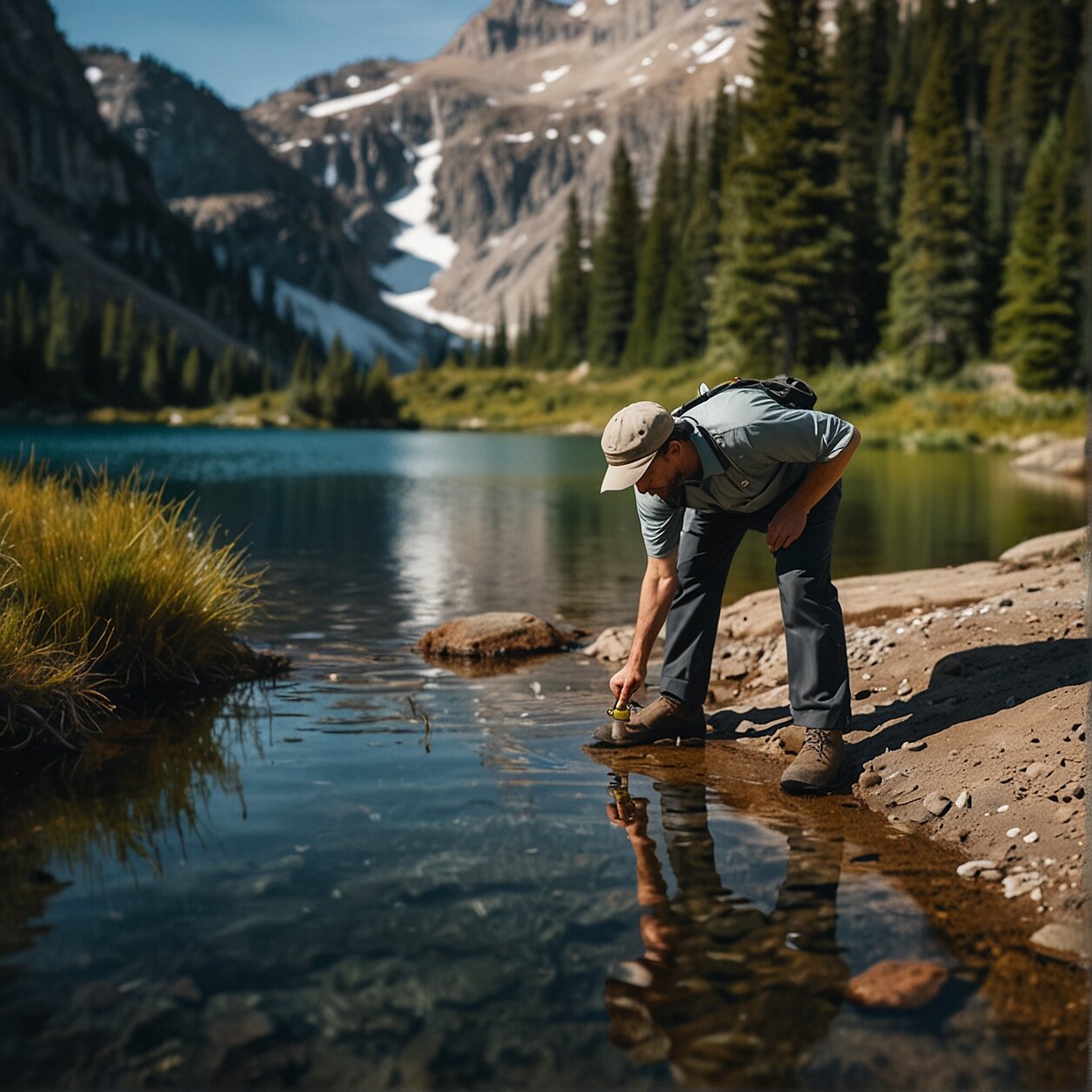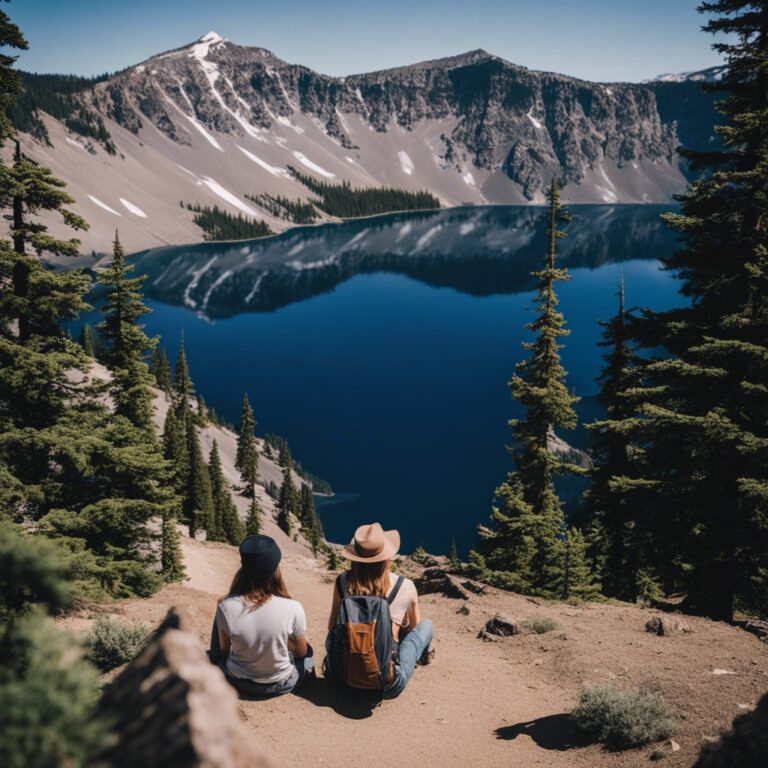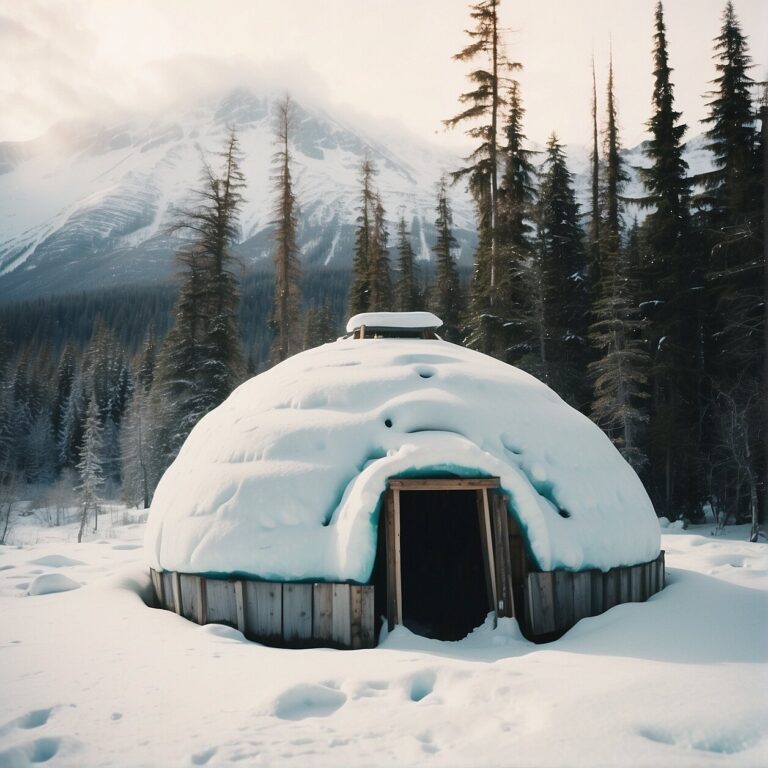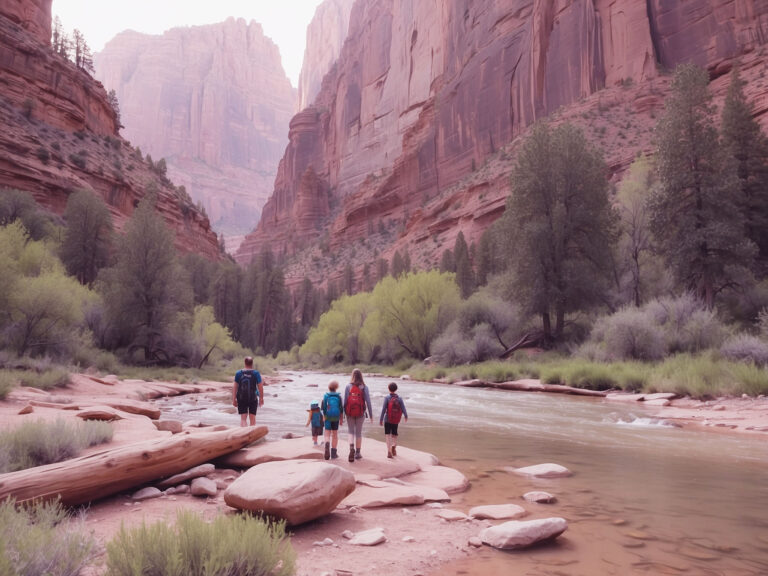Exploring Backcountry Alone: Safety Measures for Solo Adventurers
So, your adventurous spirit is calling, and you’re ready to heed its call into the off-beaten-path locations. Suddenly, the humdrum of city life, bounded by buildings and punctuated by ceaseless noise, just isn’t enough. You yearn for the rustling leaves, the sprawling landscapes, the vibrant flora, and fauna, and the thrilling sense of solitude that only the wilderness can provide. Answering this call can be incredibly rewarding, yet presents a set of unique challenges that you might not face in well-trodden paths or group travels. This article is your guide to exploring these mesmerizing, untouched reaches of the world alone. We’ll delve into everything you need to know, from understanding risks to essential gear, navigation skills, life-saving tips, and health checks.
The wilderness isn’t just about surviving; it’s about truly living amidst nature whilst being safe and prepared. This guide aims to equip you with the knowledge necessary to immerse into the wilderness while minimizing potential risks.
In this guide, you’ll get expert answers to frequently asked questions like how to handle encounters with wildlife, how to ensure a reliable source of water, what precautions you should take when hiking alone, what survival skills are necessary for solo backcountry exploration, and what are some emergency signals or techniques to use when in trouble. It’s time to start planning your solo adventure into the wild with confidence.
Understanding the Risks of Solo Backcountry Exploration
Engaging in solo backcountry exploration presents unique challenges and risks. From unpredictable weather to lack of reliable communication, the hazards are vast and require careful preparation. It’s not all doom and gloom, though; with the right proactive measures, you can mitigate most unforeseen challenges. Let’s dive in and explore these risks further.
Dealing with unexpected conditions is an intrinsic part of the experience. While the unpredictability can be thrilling, it can also be dangerous. Weather can change rapidly, trails can disappear under fresh snow or get overgrown, and blazed trails can become disorienting in fog. It’s essential to be prepared for these situations and know how to navigate safely.
Next, the absence of others can be both liberating and risky. The solitude provides an opportunity to connect with nature in an intimate, unfiltered way. Yet, remember, should you need assistance, there’s no one around to lend a hand. This reality amplifies the importance of understanding survival skills, from lighting a fire to finding safe drinkable water.
Similarly, wildlife encounters, though often thrilling, can turn perilous if not handled correctly. Alone, you can’t rely on others to scare off wildlife or help manage an unexpected situation. Learning about the wildlife in your intended travel area and the protocols for dealing with each species is vital.
Communication can be problematic in remote areas. Declining signal strength and lack of cell towers often cause connectivity issues, making it hard to get in touch with emergency services or loved ones. Carrying a satellite phone or a personal locator beacon is a robust countermeasure.
Finally, the physical exertion required for solo backcountry exploration places significant stress on the body. It is crucial to be in robust physical and mental shape, understanding your limitations and knowing when to push on or turn back.
Exploring the backcountry on your own is challenging, but it is also immensely rewarding. By being thoroughly aware of these risks, you’re more prepared to handle what comes your way effectively, allowing for a fulfilling, safe journey.
Essential Gear for Safe Solo Wilderness Exploration
In addition to your backpack and hiking boots, here are a number of other crucial items that should be part of your equipment. First and foremost among these is a first aid kit. Stock it with bandages in different sizes, antiseptic wipes and ointments, tweezers, and a snake bite kit among others.
Next up is a reliable source of illumination – a headlamp or a flashlight, coupled with enough batteries to last as much as twice your planned trip duration. These come in handy, not just to light your way in the dark, but also to signal for help in case of emergency. On a similar note, carrying a whistle can attract attention in the wilderness. The international distress signal is six quick blasts, paused for one minute, and repeated until help arrives.
A multi-tool is your versatile friend in the wilderness. This might incorporate a knife, a serrated blade, a can opener, scissors, and a screwdriver. On top of that, don’t miss out on carrying a fire starter or matches sealed in a waterproof container.
A compass and a map are unequivocally vital, even if you’re utilizing a GPS device. Technological devices can fail, lose signal, or run out of battery life. When that happens, traditional navigation tools will be your only option.
Last but definitely not the least, pack ample food and water supplies. Opt for non-perishable goods that can last for the duration of your trip or longer. For water, look into bringing a life straw or water purifying tablets, so you’re not dependent on only what you can carry.
The goal isn’t to merely survive, but to be safe and comfortable during your thrilling solo adventure. This list isn’t exhaustive but offers a comprehensive starting point to prepare for your journey in the great outdoors.
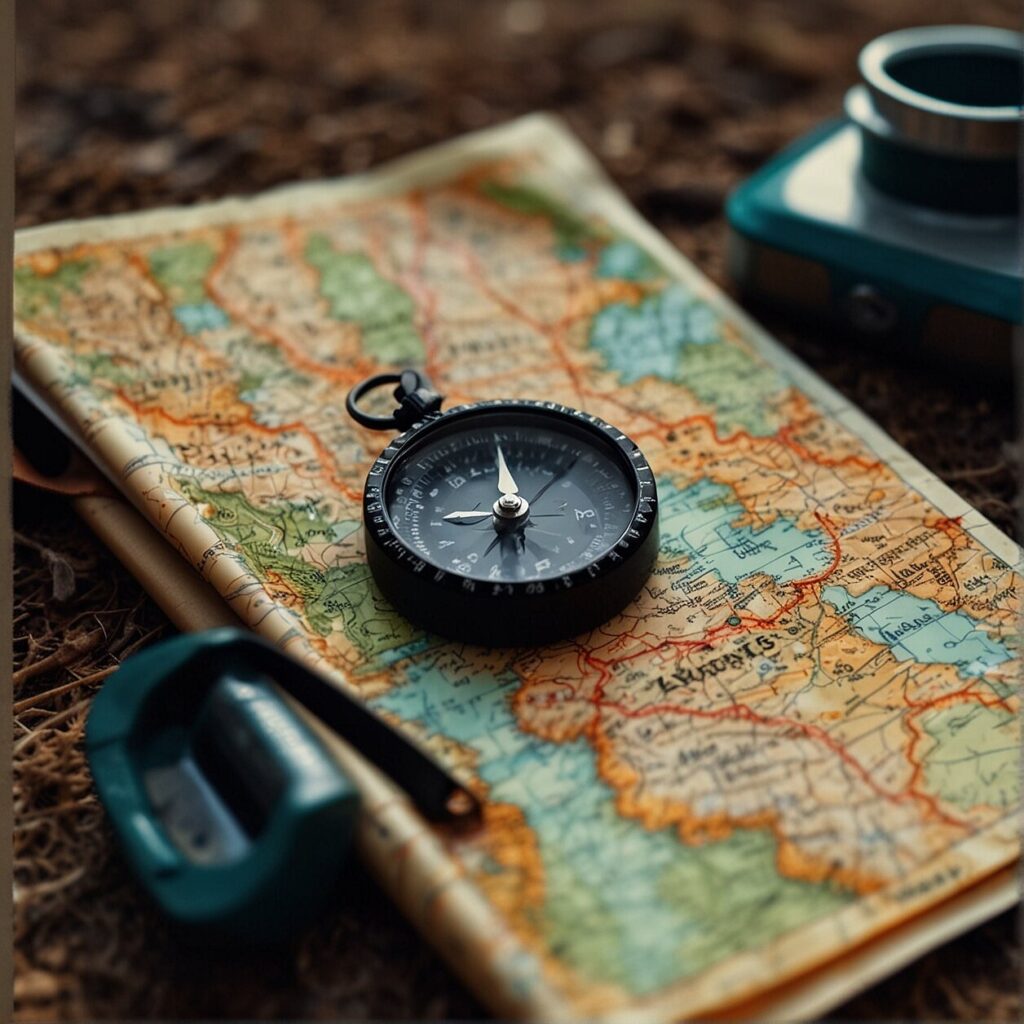
Planning Your Route: Navigation Skills for Solo Adventurers
Navigating through unexplored territory can be both exciting and daunting. One of the critical skills you need to master is reading a topographic map. Although technology has made navigation simpler with apps and devices specifically designed for this purpose, being able to read a physical map will serve as a great backup. Your aim when reading these maps should be to understand the terrain—grasp the differences between contour lines, identify water bodies and trails, and note changes in elevation.
When planning your route, use both digital navigation tools and your physical map. Remember, digital devices can run out of battery, lose signal, or malfunction. On your map, you can mark your planned trail with different colored pencils if you intend to use multiple routes. Always plan for contingencies—should adverse weather roll in suddenly, having an alternative shorter route to return can prove lifesaving.
Furthermore, learning how to use a compass correctly is another essential skill. It works in concert with your map to help orient you in relation to geographical features and desired destinations. This is particularly useful if you find yourself in dense forest or fog where visibility is low.
Moreover, you must hone your skills in charting progress and time management. Understanding how quickly you can move on different types of terrains will make your adventure safer and more enjoyable. By practicing these skills during your regular hikes, you can get a realistic estimate of your pace in various circumstances.
In conclusion, smart navigation is a multi-pronged approach where technology and traditional tools coexist. Keeping your bearings in the wilderness will make your trip safer and allow you to enjoy the beauty around you with confidence.
Ten Life-Saving Tips for Hiking Alone in Remote Areas
Tip 11: Keep Your Loved Ones Posted
Maintaining regular contact with someone back at home is crucial when hiking alone. Before setting off, inform them about your plans such as the route you’re planning to take, the estimated duration of your hike, and when you plan on checking in with them. In case you fail to check in at the scheduled time or if there’s an emergency, they could raise alarm to assist the rescue operation.
Tip 12: Learn and Practice Basic First Aid Skills
Knowing how to stop a bleeding wound, treat a sprained ankle or recognize the signs of heat stroke can be the difference between life and death in the wilderness. If possible, enroll in a certified outdoor first aid course. Also, remember to pack a well-stocked first aid kit.
Tip 13: Pack Nutritious and Energy Dense Foods
Your body will need all the fuel it can get, so pack energy-rich foods such as nuts, dried fruit, energy bars, and jerky. For long trips, consider meals that only require water to prepare. Avoid heavy foods that may weigh you down.
Tip 14: Follow Trails and Park Rules
Even when going off the beaten trail, respecting existing paths and rules is a must. This helps minimize environmental impact and ensures you don’t put yourself in needless danger.
Tip 15: Trust Your Instincts
Your gut feeling is more than just a mere hunch: it’s your body responding to subtle cues that something might be off. Perhaps the weather might be changing, a path seems unstable or an animal might be nearby. Listening to these instincts can be a lifesaver.
Tip 16: Stay Hydrated
Drink plenty of water before you start your hike and keep sipping regularly throughout. Dehydration can lead to serious complications, especially when you are alone in a remote area.
Tip 17: Protect Yourself From the Elements
Weather in the wilderness can be unpredictable. Carry the necessary clothing and gear to protect against the sun, rain, wind, and cold. Additionally, learn how to construct an emergency shelter using the materials at hand in the case you need to rest or spend a night.
Tip 18: Always Stay Visible
If you’re in trouble, you want to be found as soon as possible. Wearing bright colors, using a whistle, or creating a signal fire (in a controlled manner) can alert nearby rescuers.
Tip 19: Avoid Water Crossings
Crossing rivers and water bodies can be treacherous. The flow can be stronger than it appears and sweeping you off your feet. Only cross if it’s shallow, calm, and you can clearly see the bottom or if there’s absolutely no other route.
Tip 20: Handle Wildlife With Respect
Remember, it’s their home and you’re the visitor. Keep a safe distance, and do not feed or try to interact with the animals. In case of an encounter with a potentially dangerous animal, know the appropriate behavior to mitigate danger.
Exploring the great outdoors can be a fulfilling adventure, even when you’re by yourself. However, it’s essential to remain prepared, cautious, and respectful of nature to ensure your safety.
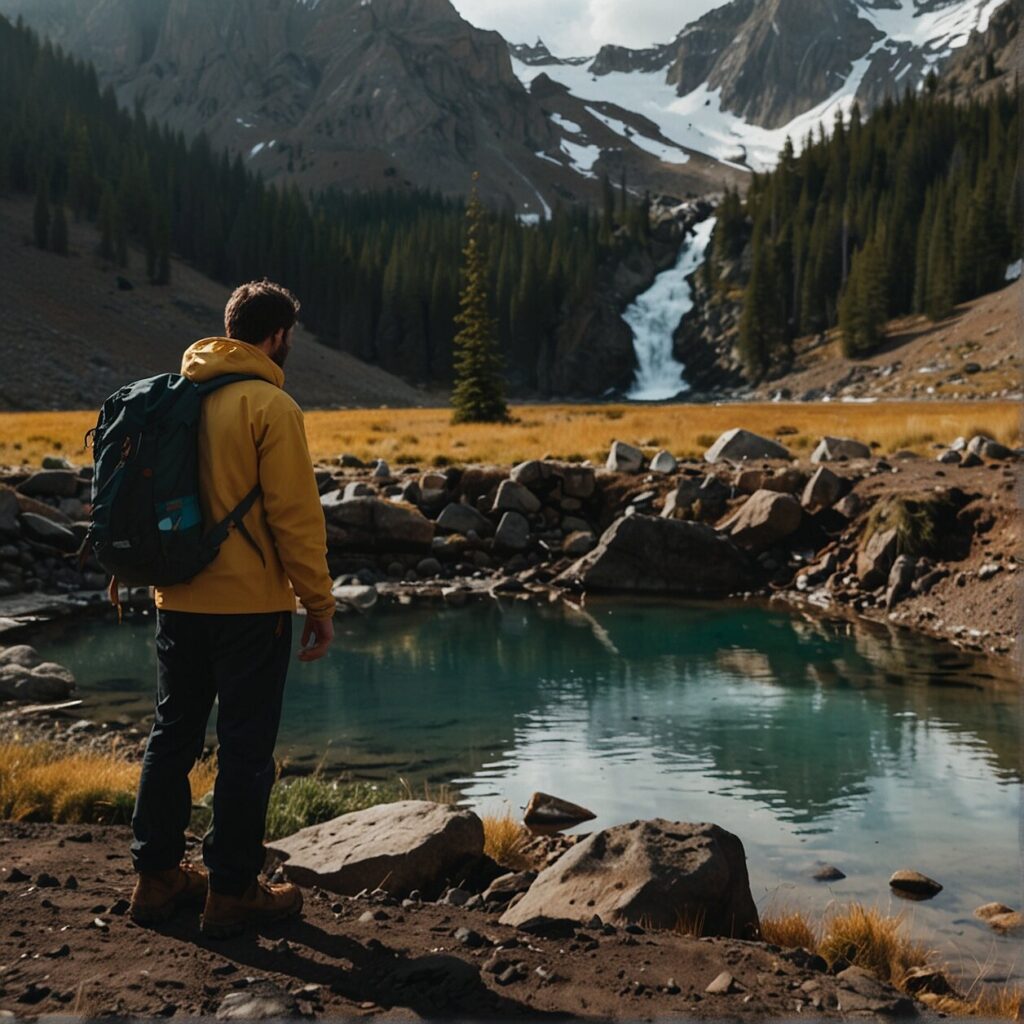
Health and Fitness Checks: Preparing Your Body for the Wilderness
Embarking on a backcountry adventure is a physically demanding endeavor, especially when you’re alone. Your strength, endurance, and overall fitness play a pivotal role in how successful and enjoyable your trip will be. To this end, make sure to undertake necessary health and fitness checks before setting off on your journey.
Start by getting a full medical check-up. Your healthcare provider can assess your overall health and advise you if you’re fit enough for such intense physical activity. They can also recommend any necessary vaccinations or medications you might need, particularly if you’re traveling to areas known for specific health risks, such as the spread of tick-borne diseases or malaria.
Next, focus on your physical conditioning. Hiking or backpacking for several hours or days at a stretch requires a good level of fitness. This isn’t about achieving an athlete’s body, but having the stamina and strength to carry a heavy load over different terrains. You’ll need to engage in regular cardio activities like walking, running, or cycling. Including strength training exercises that focus on your legs, back and core will also prove beneficial.
Apart from physical health, mental preparation is also crucial. Wilderness exploration can be isolating and mentally challenging. Develop your mental resilience by spending time alone in different outdoor settings, gradually increasing the time you spend. This can help you acclimate to the solitude you’ll probably experience during your trip.
Finally, make sure you’re up to date with your first-aid knowledge. Knowing what to do when injured or ill could be the difference between a dangerous predicament and a manageable hiccup. Consider taking an online or local first-aid course.
Remember – your health and fitness are the foundations of a safe and enjoyable backcountry adventure. Take the time to prepare physically and mentally, and you’ll be ready to tackle the wilderness with confidence.
FAQ’S
As we delve deeper into the specifics of solo wilderness exploration, it’s natural that you’d have a multitude of questions that need clarifications. Be it encounters with wildlife, ensuring a reliable source of water, or knowing survival techniques, we’ve got you covered. In this frequently asked questions (FAQs) section, we will be addressing your most pressing inquiries, providing further insights on the measures and precautions necessary for a safe off-the-beaten-path adventure. So let’s jump in and answer some of the questions that many explorers, like yourself, often ask.
What precautions should I take when hiking alone in remote areas?
Ensuring your safety while hiking alone in uncharted territories entails maintaining a high vigilance level alongside the readiness to confront the unpredictable. This requires a comprehensive approach that includes both physical preparation and a thorough understanding of the outdoor environment in which you’re venturing.
Start by informing someone about your hiking plans, including your departure date, return date, and expected route. This acts as a safety net in case something goes awry. Nonetheless, keep your plan flexible and adjust to the changing outdoor conditions accordingly. Enroll in a basic first-aid course and take note of the signs of altitude sickness, hypothermia, and heatstroke.
Be sure to pack smart. Include enough food and water, select gear that’s appropriate for the current and predicted weather, and carry at minimum a map and a compass for navigation. Understand the local wildlife and how to handle encounters. You should also have a plan for how you expect to find safe drinkable water en route.
Yes, venturing off the beaten path brings that brilliant taste of adventure. Still, it’s essential to balance this thrill with caution. With these precautions in place, you can set out on your journey with the confidence that you’re well-prepared to handle whatever comes your way.
How do I handle encounters with wildlife when hiking alone?
Handling encounters with wildlife should always be done with an enduring sense of respect. Every creature has its own patterns of behavior, and knowing some basics can help mitigate potentially precarious situations. Simply put, educate yourself about the wildlife you may encounter on your journey, and give them a wide berth whenever possible.
Start by making your presence known. Sing, chat, or ring bells to scare off animals before you run into them. Most animals prefer to avoid human interaction and will move away if they hear you coming. It’s also crucial to stay on marked trails where animals are less likely to roam.
In situations where you encounter larger animals such as bears or moose, it’s important to make yourself look bigger while slowly backing away. Don’t turn your back on the animal or attempt to run as this might trigger a chase response. And remember, never ever feed wildlife. Not only does this encourage animals to associate humans with food, leading to future encounters, but our food isn’t healthy for them.
Equip yourself with bear spray if you’re traveling in areas where bears are common. It’s a powerful deterrent that can be used from a safe distance. Lastly, know the emergency procedures to follow if an encounter turns aggressive. Reporting any aggressive animals to park officials can help protect future adventurers, but your immediate concern should always be your own safety. Remember – you’re the visitor in their home.
While it’s impossible to plan for every eventuality, having general knowledge about the actions to take during wildlife encounters goes a long way toward ensuring your safety. The wilderness vibrates with life, and respecting that life is the first step to coexisting with it.
What are some survival skills necessary for solo backcountry exploration?
Arming yourself with essential survival skills can mean the difference between a do or die situation when exploring off-the-beaten-path locations alone. The preservation of life is achievable, and survival basic knowledge is critical.
The first vital skill to master is creating fire, which provides heat, ward off predators, and serves as a signal for help. Despite the convenience of lighters and matches, it’s beneficial to learn old-fashioned friction-based methods such as using a fire bow or fire plough.
Moreover, proper shelter building can protect you from harsh weather conditions or possible threats from wildlife. Shelters can range from natural structures such as caves to constructed lean-tos or snow tunnels.
Next, food and water sourcing are crucial. Familiarize yourself with edible plants and insects or methods to capture or hunt small animals. For water, learn how to locate natural springs or condense moisture from the air. It’s also important to know how to purify collected water to prevent illness.
Last but not least, familiarize yourself with basic first-aid skills. Understand how to dress a wound, splint a broken leg, or treat hypothermia. Above all, keep a level-head and remain calm in emergencies. Panic can often lead to hasty and unwise decisions.
Remember, the goal is not necessarily to live indefinitely in the wild. It’s to sustain yourself until help arrives or you can safely find your way back.
How can I ensure a reliable source of water when exploring remote areas alone?
Ensuring constant access to a clean and safe water source is vital when you explore remote locations, and there’s no one-size-fits-all solution. The methods you adopt are largely dependent on the environment you’re in, but some apply universally. Let’s delve into some practical strategies for maintaining hydration during your solo adventure.
To start, always be sure to pack plenty of water prior to embarking on your journey. Although it may add extra weight to your pack, this is one burden you don’t want to cut corners on. However, your water supply can dwindle faster than you might anticipate, making locating natural water sources an essential skill to have.
Streams, rivers, and lakes can be excellent sources of hydration, but it’s important to remember that while the water may look clear, it often contains harmful bacteria and parasites. Therefore, you need to invest in some type of water purification method. There are tablets, ultraviolet lights, and pumps specifically crafted for backpackers. A multifunctional tool that not only filters but also stores water can be quite beneficial.
Then we have rainwater. Harnessing this resource can be as simple as stretching out a tarp or raincoat, channeling the rain into a container. It’s a plentiful and pure source when available, so consider this method an option if the forecast predicts showers during your trip.
In more desert-like terrains, vegetation can be a surprising source of water. By tying a plastic bag around a leafy branch on a sunny day, you can collect the water these plants transpire. Just remember not to rely on this method as your primary source, as it doesn’t yield much water.
Now, there are extreme survival techniques like digging for water near vegetation or extracting water from certain types of cacti, but these should only be used as a last resort when you’re in a real bind. Precaution and preparation are far more reliable than desperation. So let’s review: pack sufficient water, locate natural water sources, use water purification tools, consider using natural rainfall, and explore alternative sources only when necessary.
What are some emergency signals or techniques to use when in trouble during a solo wilderness adventure?
Getting into trouble during a solo wilderness adventure can be a frightening experience. However, utilizing some emergency signals or techniques can greatly increase your chances of getting help promptly and effectively.
Three of Anything
One of the universally recognized distress signals is displaying or creating three of anything in a noticeable pattern. This could mean three fires, three piles of rocks, or even three blasts on a whistle. The “rule of three” is known worldwide, so making use of it could attract the attention of a passerby or an airplane from miles away.
Signal Mirror
A signal mirror is a highly effective tool for daytime signaling, especially when the sun is out. The flash of a signal mirror can be seen by rescuers from up to 100 miles away. The mirror should be aimed towards the horizon and a sweeping motion should be used to increase your chances of being seen.
SOS
Creating an SOS sign is another widely recognized distress signal. Made famous by the Morse code distress signal (. . . — — — . . .), an SOS sign can be created using rocks, branches, or by making marks in the snow or sand. It’s especially detectable from an aerial viewpoint.
Flares and Smoke
Both flares and smoke signals can be seen from a considerable distance, making them great for attracting attention. It’s important to note that flares are best used at night while smoke signals work well during the day. Also, consider the color of your smoke; black smoke tends to be more visible against a light sky, while white smoke is more noticeable against a darker background.
Remember, the goal of these techniques is to make yourself as visible as possible. By familiarizing yourself with these signals and techniques, you can drastically increase your likelihood of being rescued if the need arises during your solo wilderness exploration.

